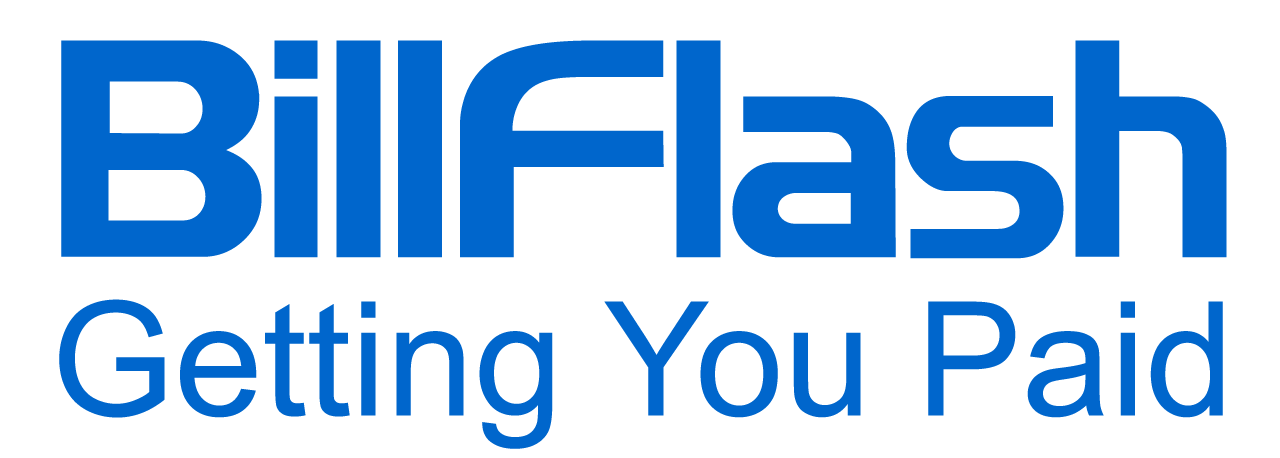Learn how integrated medical billing software systems boost your practice's revenue while enhancing staff efficiency and patient experiences.
Disconnected medical billing software systems are costing healthcare practices more than monthly software fees. When your billing, payment, and collection platforms fail to communicate with each other, hidden costs add up quickly. Staff spend hours re-entering the same data, your practice experiences revenue delays from manual processes, billing errors frustrate patients, and the administrative burden is burning everyone out.
The numbers speak for themselves. Physicians spend, on average, 15.6 hours a week on administrative work, which is almost two full clinic days lost to paperwork. Disconnected medical billing software systems necessitate manual workarounds, creating additional problems throughout the revenue cycle. And this isn't just about efficiency; it's about the health of your practice. Disconnected systems don’t just waste time—they drain your practice’s money, staff morale, and patient trust.
On the other side, integrated billing software does more than simplify these workflows; it protects your bottom line and improves relationships with patients. Here's a closer look at why disconnected systems are holding your practice back, and how integration can make a big difference.

The True Cost of Disconnected Medical Billing Software Systems
Below are some of the ways disconnected medical billing software systems affect your practice:
Administrative Overload That Frustrates Your Staff
Healthcare providers spend nearly half their workday managing administrative tasks, with previous research showing that providers spend almost two hours on administrative work for every hour of direct patient care. Much of this burden results from reliance on disconnected systems. Your staff isn't just entering data once; they're re-entering the same patient information across multiple platforms like practice management systems, payment processors, and collection platforms.
Each system requires a separate login, a different interface, and a unique method for organizing data. When systems don't integrate, every patient update, insurance change, or payment requires manual entry across multiple systems. Administrative tasks have been the leading cause of physician burnout since 2018. In 2023, 62% of physicians mentioned clerical and documentation demands as their main source of job dissatisfaction. The constant switching between systems leads to mental fatigue and lowers the quality of patient care.
Error-Prone Processes That Cost You Revenue
When staff manually transfer data between disconnected medical billing software systems, errors are likely to occur. As many as 80% of all medical bills contain errors. These errors are often due to a combination of manual data entry, incorrect coding, and a lack of communication between disconnected systems. A mistyped digit in an account number, a misspelled name, or an incorrect insurance ID can create duplicate patient accounts, delayed payments, and billing confusion. These errors add up quickly. A billing mistake might delay payment by weeks, while your staff spends extra time tracking down and correcting issues. Some errors even go unnoticed, resulting in lost revenue that never gets recovered.
Revenue Drain From Mismatched Systems
Disconnected systems create gaps where revenue falls through the cracks. When your billing system can't communicate with your payment processor, payments might not post automatically to patient accounts. When your collection software operates independently from your billing platform, you might send collection notices to patients who have already paid. The average Days Sales Outstanding (DSO) for the healthcare industry over the last few years is 47 days. Practices with disconnected systems generally perform worse than this number because their disconnected workflows create delays at every step of the revenue cycle.
Patient Experience Impact That Drives Patients Away
Patients today expect the same digital experience from their healthcare providers that they get from other service industries. When your medical billing software systems don't communicate, patients experience:
- Limited payment options because different systems have different abilities
- Confusing bills that don't reflect the payments they've made
- Unreliable communication because different platforms send different messages
- Frustration when they have questions that your staff can't answer

Warning Signs Your Systems Are Holding You Back
How do you know if disconnected systems are hurting your practice? Here are the red flags to watch for:
Delayed Collections Above Industry Benchmarks
Industry benchmarks suggest that healthy practices maintain an average of 30 to 40 days in accounts receivable. If your practice consistently exceeds this benchmark, disconnected systems could be creating gaps in your revenue cycle. When none of your systems communicate, each step in the process requires staff intervention. Staff must check multiple systems throughout the day to understand account statuses, which often causes delays in follow-up and patient collections.
Staff Burnout From Manual Workarounds
In 2022, the U.S. Surgeon General referred to staff burnout among healthcare workers as a public health crisis and warned that if it's not addressed, many would leave the field, which would endanger the entire healthcare system. Administrative burden is a major contributor to this crisis. A few signs that disconnected medical billing software systems are burning out your staff include:
- Staff complain daily about repetitive data entry
- Mistakes are increasing due to rushed work or fatigue
- Staff need overtime to keep up with manual tasks
- High turnover in billing and administrative positions
Patients Complaining About Billing Confusion
When patients are consistently frustrated, it's a clear sign that your systems are not meeting their needs. Watch for these complaints:
- Receiving duplicate patient statements for the same service
- Getting collection notices for bills they have already paid
- Noticing inconsistent account balances when they communicate with the practice through different channels
- Not being able to make a payment because the payment options available don't match their preferences
Duplicate Accounts and Data Inconsistencies
Without integration, it's easy for staff to create duplicates when they can't find existing patient accounts across different systems. These duplicates create lasting problems, such as:
- Split payment history
- Confusion about which account to update
- Inaccurate reporting because patient data is spread out
- Wasted time managing multiple records for the same patient
Poor Visibility Into Revenue Cycle Performance
Disconnected medical billing software systems make it difficult to obtain a full view of your practice's financial health. When data is stored in separate, disconnected systems, you can't easily answer questions, such as:
- Which payers are paying the fastest?
- What's our clean claims rate by payer?
- How effective are our collection efforts?
- Which services generate the most revenue?
Without this visibility, you're making decisions based on incomplete information.

How Integration Solves the Problem
Below are some of the ways integration solves the issues you experience in your practice:
One Platform, One Login
Instead of managing multiple billing software subscriptions and vendor relationships, integrated systems provide a single platform for billing, payments, and collections. Your staff learns one interface, manages one set of login credentials, and works within one consistent system. This simplicity reduces training time, eliminates confusion from switching between different interfaces, and ensures the entire staff can support patients with billing questions as everyone is working with the same information.
Seamless Data Flow
When your medical billing software systems integrate, data flows automatically between functions. Patient payments post directly to their accounts without manual intervention. Insurance updates in one place are visible everywhere else, and collection activities automatically align with the current account status. This automation helps eliminate the data entry errors that cause billing problems and revenue delays. By incorporating automated billing, practices can save providers about $166 billion annually.
All-in-One Efficiency
Integration creates workflows that are more efficient and more predictable. Staff can finish tasks quickly because they don't need to switch between systems. Processes will be more standardized because everyone follows the same integrated workflow. Automating workflows can reduce the time it takes to complete tasks by nearly half (48%), freeing up staff to focus on patient care and proactive revenue cycle management.
Staff Relief
Integrated medical billing software systems can automate many routine tasks within your practice, freeing up your staff from manual actions. For example, an integrated system can handle automatic statement generation and delivery, as well as send automated payment reminders. Integration can also automatically post payments and adjustments, reducing the need for manual data entry. By automating these repetitive processes, your staff will be empowered to focus on tasks that require their skilled expertise, such as being more involved in patient cases and building stronger patient relationships.
Why BillFlash Integration Stands Out
BillFlash's integrated approach addresses the problem of disconnected systems by bringing all revenue cycle functions under one roof. Here's how each component works together to eliminate the inefficiencies of disconnected medical billing software systems:
Seamless Integration With 100+ EHR/PM Systems
BillFlash integrates directly with over 100 electronic health record and practice management systems, allowing you to continue using the software your staff already knows how to use. Patient demographics, insurance information, and charge data flow automatically from your EHR into BillFlash's billing platform, eliminating duplicate data entry and ensuring consistency across systems.
PreBill: Upfront Cost Transparency
BillFlash PreBill makes it simple to collect patient responsibility before an appointment, even for telehealth visits. Instead of tracking down payments after the appointment, you can send patients a secure PreBill link via text or email. Patients can quickly and securely complete their payment online through PayWoot.com before they even walk through your door (or log in for their telehealth visit). PreBill is designed to be used before a formal bill is created or anytime a traditional bill isn't needed. This approach helps your practice collect more revenue up front.
eBill + Mail + PayReminders: Multi-Channel Communication
BillFlash's integrated medical billing software systems can streamline billing by coordinating electronic statements, mailed bills, and sending payment reminders. Every time a bill is approved, patients receive a free online eBill they can easily view and pay at PayWoot.com. eBill Notices are delivered the same day by email and text, which is key because 32% of people will pay their medical bills within five minutes of receiving an electronic notification. For those who still value paper, Mailed Bills arrive by First-Class USPS the next business day, with 74% of patients saying they prefer this reliable option. Each printed bill includes a QR code, bridging the gap for the 55.5% of patients who choose to pay online but still want a traditional statement to scan and pay in seconds.
Automated PayReminders handle the follow-up—sending up to three electronic reminders per month, sent via text and email at 7, 14, and 21 days after the first payment—so your staff doesn’t have to. You only pay for reminders that are sent, and the system can be customized or left on default settings. Patients are automatically removed from the reminder workflow once they complete their payment, preventing excessive messaging. With all patient touchpoints tracked in one platform and the best communication methods chosen, your practice delivers clear messaging while reducing staff burden and eliminating mistakes.

Pay & FlexPay: Full Payment Solutions
BillFlash's integrated payment platform accepts all payment types. This includes credit cards, checks, phone payments, ACH, digital wallets such as Google Pay and Apple Pay, Tap to Pay, AutoPay, PlanPay, and FlexPay financing, using a single merchant account. Patients can pay through any channel they prefer, and all payments post automatically to their accounts. FlexPay addresses the reality that the average American can't afford a $400 unexpected bill by offering patient financing with an online application that takes less than one minute to complete, no hard credit check, a 90% approval rate, and a guaranteed 0% interest option for all approved patients. Providers get paid in full the next business day, while BillFlash manages the ongoing payment plan.
Integrated Collections
Unlike traditional collection agencies that operate independently from medical billing software systems, BillFlash's Integrated Collections works within the same platform you use for billing and payments. You maintain control over which accounts go to collections, can monitor all collection activity in real time, and receive recovered payments directly into your merchant account. Recovery Specialists licensed in all 50 states handle collections professionally, with 75% being bilingual to serve diverse patient populations.
Proven Results
Practices using BillFlash integrated solutions see significant improvements in revenue cycle performance. Some practices have increased collections by up to 60% while reducing administrative burden on their staff. The integrated approach eliminates the inefficiencies that disconnected medical billing software systems create, resulting in faster payments, fewer errors, and improved staff productivity.
Reporting and Analytics
BillFlash's integrated platform provides detailed, real-time revenue cycle metrics within a comprehensive platform. You can instantly see the number of bills uploaded in a particular week and whether they were delivered via mail, email, or text, with delivery confirmations showing who opened an eBill or received a mailed statement.
The system tracks PreBill activity and payments, indicating PayReminders’ effectiveness by listing reminders sent, monitors FlexPay engagement, and displays payment amounts. You can even view the source of each payment, such as whether patients paid from a mailed bill, text link, or online portal. With all this real-time data in one place, you don't have to log into multiple systems to understand your revenue cycle performance.

The Patient Experience Advantage
Integrated medical billing software systems do much more than benefit your practice. They greatly improve the patient experience. When all systems work together, patients benefit from:
Clear, Consistent Communication
Confusing billing is a major concern for patients and can impact their perception of a practice. A 2024 survey by Experian Health found that over half of patients (54%) who felt access to care had declined attributed it to the rising cost of healthcare. By using integrated medical billing software systems that provide clear and consistent billing communication, providers can ease this confusion. When patients receive coordinated messages that reflect their payments and account history, it builds trust. This transparency reduces billing complaints and helps develop stronger patient-provider relationships.
Multiple Payment Options That Work
Offering multiple payment options can make a difference. Nearly a third of patients (32%) who felt patient access had improved credited it to more manageable payment plans. With an integrated system, you can offer patients a range of choices, including online, mobile, digital wallets, ACH, automatic payments, and payment plans through a single experience. Patients who struggle with unexpected bills might even switch providers based on the payment experience. But when your systems work together to provide flexible options, patients are more likely to pay on time.
Financing Options That Remove Barriers to Care
A majority of U.S. adults describe their personal financial situation as “fair” (40%) or “poor” (17%). With many people struggling to afford care, accessible financing options have become crucial for patient retention and ensuring everyone can get the care they need. Integrated systems that incorporate these options can remove financial barriers for patients while ensuring timely payment for practices. When patients know they have options like financing, they're more likely to feel more satisfied with their overall care. Additionally, when patients have positive billing experiences, they are more likely to remain loyal to your practice and refer friends and family.
Integration Is No Longer Optional
The healthcare industry has reached its tipping point. Administrative costs account for approximately 25% of total U.S. healthcare expenditures, and a significant portion of this burden stems from disconnected systems that need manual workarounds and add unnecessary complications. Disconnected medical billing software systems cost your practice money through delayed payments and patient turnover. This is all happening while your staff burns out from this overload, threatening the stability of your healthcare operations.
Integrated solutions like BillFlash enhance revenue cycle management by resolving the issues that disconnected systems create. These solutions reduce payment times, lessen staff burdens, and deliver improved experiences. They also free up time and mental energy that can be redirected toward patient care and practice growth. Integration isn't just about efficiency; it's also about providing your staff the solutions they need to succeed and your patients the experiences they expect.
The choices your practice has moving forward are to continue struggling with disconnected medical billing software systems that drain resources and frustrate everyone involved, or implement an integrated solution that simplifies operations and improves results. Practices that stick with disconnected systems will find themselves at a significant disadvantage. So, are you ready to stop losing revenue to disconnected systems? Schedule a demo with BillFlash today and see how our all-in-one billing, payment, and collections platform can help your practice get paid faster, reduce administrative burden, and build stronger patient relationships.

